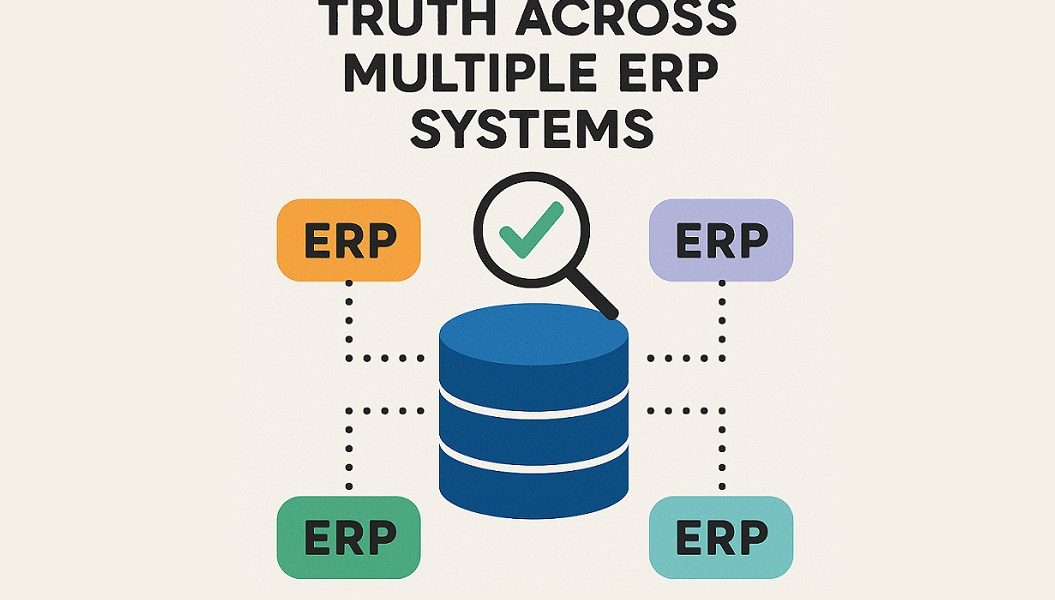What Does “Single Version of Truth” Mean in ERP?
Data Accuracy and Consistency
A single version of truth ensures that all departments, from finance to supply chain, access the same accurate data without duplication or discrepancies.
Transparency for Decision-Makers
Leadership teams can make data-driven decisions confidently when they rely on a unified, consistent source of information.
Streamlining Cross-Department Collaboration
When ERP systems speak the same “data language,” collaboration improves, reducing friction across finance, HR, manufacturing, and logistics.
Challenges of Managing Multiple ERP Systems
Data Silos and Fragmentation
Each ERP system stores data differently, leading to silos that limit visibility and increase inefficiencies.
Integration Complexity
ERP systems often differ in architecture, making integration a daunting and resource-heavy process.
Compliance and Security Risks
Fragmented ERP environments can increase the risk of regulatory non-compliance and data breaches.
Why Businesses Need One Truth Across Systems
Organizations that fail to unify ERP data risk misreporting, poor forecasting, and delayed decision-making. A single version of truth enables operational alignment, ensuring every department works with one truth across systems.
Key Strategies to Achieve a Single Version of Truth
Standardizing Data Models Across ERPs
Unifying naming conventions, codes, and data structures across ERP platforms ensures consistency.
Implementing a Master Data Management (MDM) Solution
MDM acts as a central hub, cleaning and governing data to ensure accuracy.
Leveraging APIs and Middleware for Seamless Integration
Modern APIs and middleware solutions enable different ERP systems to communicate effectively.
Real-Time Data Synchronization
Batch updates often cause lags. Real-time synchronization ensures that all stakeholders access the most current data.
Cloud-Based ERP Integration Platforms
Cloud solutions offer scalability, flexibility, and cost-effectiveness for unifying ERP systems globally.
The Role of AI and Automation in ERP Unification
AI-driven platforms like routineai.com are revolutionizing ERP integration. Automation reduces manual errors, accelerates reconciliation, and ensures continuous monitoring of data integrity.
Case Studies: Companies Achieving Unified ERP Data
- Global Retailer: Consolidated five ERP systems into a unified cloud-based solution, reducing reporting time by 40%.
- Manufacturing Firm: Implemented MDM and AI-driven integration tools, achieving real-time visibility into supply chain operations.
Tools and Platforms That Simplify ERP Data Integration
Some leading tools that support ERP integration include:
- Informatica MDM
- MuleSoft Anypoint Platform
- SAP Cloud Platform Integration
- Oracle Integration Cloud
How to Measure Success in Achieving a Single Version of Truth
Improved Reporting Accuracy
Reports should match across departments without discrepancies.
Faster Decision-Making
Leaders can act quickly with accurate, real-time insights.
Enhanced Compliance and Governance
Unified ERP systems reduce audit risks and regulatory issues.
Best Practices for a Smooth ERP Data Unification Journey
- Start with a clear data governance framework.
- Align IT and business teams early.
- Invest in scalable integration platforms.
- Continuously monitor and refine processes.
Common Mistakes to Avoid When Integrating Multiple ERP Systems
- Ignoring change management.
- Overlooking hidden costs.
- Attempting a “big bang” migration without phased execution.
- Failing to address data quality issues at the start.
FAQs on ERP Data Unification
Q1: Why is a single version of truth important for ERP systems?
It ensures accuracy, improves collaboration, and supports faster decision-making.
Q2: Can small businesses benefit from ERP data unification?
Yes, even SMEs can improve efficiency and reduce errors by integrating ERP systems.
Q3: How long does ERP data unification typically take?
It depends on system complexity, but most projects span from 6 months to 2 years.
Q4: What is the role of AI in ERP unification?
AI automates data validation, integration, and monitoring for continuous accuracy.
Q5: Which industries benefit most from ERP unification?
Manufacturing, retail, healthcare, and financial services often see the highest ROI.
Q6: What’s the first step toward achieving SVOT?
Start with a data audit to identify silos, inconsistencies, and integration needs.
Conclusion: Building a Future-Ready ERP Strategy
Achieving a single version of truth across multiple ERP systems is no longer optional—it’s essential for staying competitive. With standardized data, real-time integration, and AI-driven tools, businesses can unlock efficiency, improve decision-making, and build a future-ready ERP strategy.



